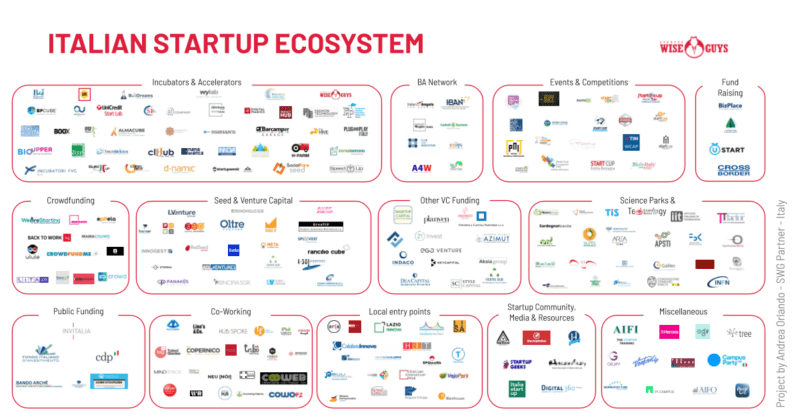The problem
Many startups fall into the trap of working in their businesses rather than on their businesses, without realizing it. You’re grinding away at keeping your startup afloat because it’s been stretched over capacity, instead of looking forward at how you should be scaling the company. By then it’s often too late and it feels like an almighty challenge to get out of the hole.
In that situation, we often think that raising money and hiring more staff will fix it. But even if it does temporarily give you a small boost, it doesn’t fix your core problem – you need to keep building your businesses.
Startups face several challenges in their earliest stages, like lead generation, sales and product market fit. But there are two business qualities we rarely think of as essential:
Consistent delivery: The ability to deliver something day in, day out without pausing or stopping. One example is paid ads – as long as you put in the cash, they can always be running.
Capacity for work: How much work your business can handle. This can be increased by staff numbers and automation, but decreased by inefficiency and unclear roles and responsibilities. For example, you may have efficiency problems if you can only work with 5 clients before you have no time left for new lead generation.
Whether or not you’re doing these two things right can help you identify if you’re working in your business rather than on your business. Here are the problem signs to look out for.
The problem: Capacity for work
For most businesses, more customers means more growth. But before you know it, you may be spending all of your time working with clients, onboarding and supporting them. Your business will soon be flatlining because it physically cannot do any more work to generate new leads. You’ve maxed out your capacity.
The problem: Consistent delivery
Building a startup is like spinning plates – working in one area of a business and then having to jump into another is an experience many founders know too well. It’s the startup lifestyle we are usually sold – a crazy and erratic journey towards getting traction.
But the reality is that chaos stops you from creating a baseline to build a sustainable business on, not to mention it will soon lead to burnout.
Even though founders often obsess over better marketing, better leads, and a better sales process, we need to make sure that we have that baseline before we can improve exponentially in these areas. A business with average but consistent lead generation, marketing, and sales, will always outperform a business with amazing but inconsistent delivery.
How to fix it
You can fix the problem by taking on small batches of work that address “only what you need,” rather than trying to build everything in one go. We do this through a 4-step system:
- Observe
- Analyse
- Decide
- Act
This creates feedback loops that constantly look for the next small batch of work that your business needs to execute. Here is an example company and how it would go through two 4-step cycles to gradually grow.
Case study
Company A is a new company, it has product market fit, and it has 1 paying customer. Its priority: Sales + Cash in the bank. Its next step: Build the sales machine + processes.
The traditional but flawed way of solving this problem would be to build a full list of all tasks – maybe about 20 of them – related to building a sales process, such as creating sales pipelines, workflows, email sequences, and playbooks.
I know from experience that something like this means lots of wasted time and rework. Company A shouldn’t be thinking about playbooks, workflows, or email sequences when it still hasn’t acquired enough knowledge and experience, nor tested emails yet. If the company were to build these elements at this early stage, they would likely need rebuilding down the line.
Here’s how we can fix this scenario using our 4-step system:
Observe: We have a new company, with product/market fit and 1 paying customer. It wants to start building the sales machine and getting cash into the business.
Analyse: The company doesn’t know the exact sales process it will have to implement to acquire new customers but will have a rough idea, i.e discussion with the lead, demo, POC, commercial negotiations. The company needs to track the details of all deals. The objective is to complete 3 – 5 deals, providing the company with funds to develop a more comprehensive sales plan.
Decide: Creating a spreadsheet with columns for every deal name, company contacts, stage, deal owner and notes, would help the company reach its 3 – 5 closed deal objective.
Act: Implement the spreadsheet.
We can now show how this structure works to continually create the next batch of work.
Company A is now a growing startup, it has completed 5 sales since the first example, and has 6 paying customers who are providing regular feedback. Its priority: Acquire more customers and develop the sales process to scale with outsourced outbound lead generation. Its next step: Develop its sales process so it’s ready to grow accordingly.
Observe: The first 6 paying customers have been acquired and the company is looking to grow using an outbound lead generation strategy. 5 – 10 qualified leads are expected each week.
Analyse: The company now knows its deal stages and has initial information on what works and what doesn’t during the sales process. It has to qualify the leads and decide if they should progress through the sales cycle. There are few leads so only 1 person is needed in the sales team. The business needs sales analytics, e.g. the amount of time spent in each deal stage. Little resources should be spent on marketing activity or inbound education.
Decide: Given the more advanced sales process the company should invest in a CRM. The deal stages can be created within the CRM. With an outsourced outbound approach, prospects will be passed directly to sales meaning there is no need to spend money on marketing tools. The company has identified which sales areas can be automated and can build some basic automations / workflows. Custom fields can be created to score each lead as they enter the CRM.
Act: Implement the CRM and the core features needed to succeed in the company’s objectives.
This process can be applied to all areas of a business on a constant basis. By working in this way you won’t use up your capacity on unnecessary (re)work. The benefits are summarized here:
- Only work on and build what you need = Maximise profits
- No rework = Minimise wasted time and unnecessary costs
- Do more with smaller teams = Your team will perform more efficiently, achieving more with less.
About the author:

Dan Wheatley is our operations and growth strategy mentor. He’s a CEO & Co-founder of StraightTalk Consulting, SAAS operations and growth consultancy, which works with founders to implement long term data-driven growth strategies.



